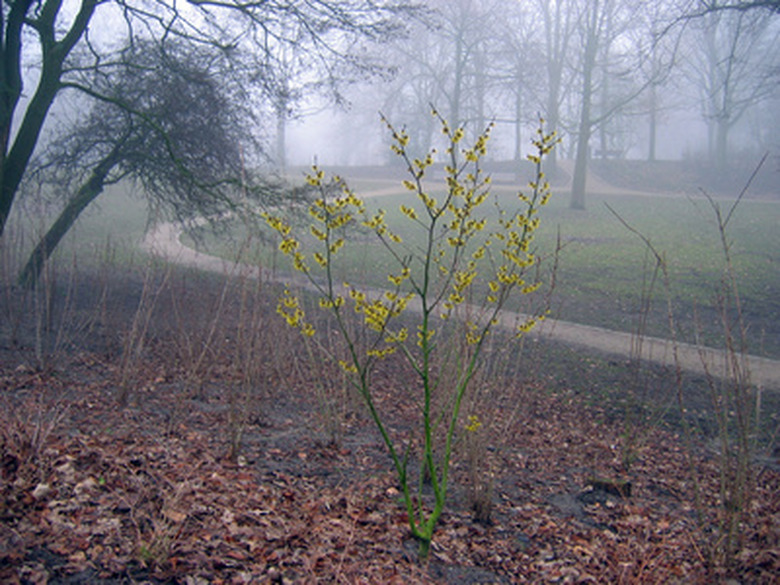Witch Hazel Tree Diseases
Witch hazel (Hamamelis) is a reliable and gracious multi-stemmed shrub, favored by garden enthusiasts for its fragrant flowers and large velvety leaves. This hardy plant grows across a wide range in the United States and fortunately suffers from few disease and pest problems.
Horned Gall Aphids
Horned gall aphid (Hormaphis hamamelidis) is a rather ugly blemish attacking the leaves and stems of the Witch Hazel. The aphid, through saliva injects a chemical into the plant that forms the narrow cone-shaped gall. The gall, which is pale green, is unsightly but rarely a serious threat to the health of the plant.
Direct insecticide treatment is rarely successful because of the protection offered by the gall. At bud break, there is a tiny window when the overwintered insect emerges to feed and the only time insecticide is effective; making direct application a difficult method of control. Prevention is the best way to eliminate gall aphids. Remove and dispose affected leaves each season to disrupt the insect's life cycle and discourage repeat infestations.
- Witch hazel (Hamamelis) is a reliable and gracious multi-stemmed shrub, favored by garden enthusiasts for its fragrant flowers and large velvety leaves.
- The gall, which is pale green, is unsightly but rarely a serious threat to the health of the plant.
Leaf Spots
The leaf spotting fungus, Phyllosticta hamamelidis, can render an otherwise beautiful specimen into a tree with unsightly blotched, yellowing leaves. Symptoms include brownish, black or tan spots with circular rings leading to a darker margin. When the spots combine they can form larger blotches and cause the leaf to turn yellow and drop. Leaf spots are usually caused by a fungus but some are caused by bacteria. Established plants can withstand leaf spot, even to the point of complete defoliation, younger plants risk permanent damage until maturity.
Strategies for control of leaf spot include doing nothing to wait and see if the infection returns in the next growing cycle. Remove infected leaves from the plant and surrounding area to remove fungal spores. Eliminate overhead watering. Wet leaves will promote leaf spot growth. Limit fertilizer. Overuse of nitrogen causes a flush of new growth prone to infection. In severe cases, application of fungicide, such as Tebuconazole or Myclobutanil, would be an appropriate treatment. To ensure safe and effective application, always read the label and follow the manufacturer's instructions. If all else fails remove the plant and replace with a specimen, which is resistant or tolerant to the disease.
- The leaf spotting fungus, Phyllosticta hamamelidis, can render an otherwise beautiful specimen into a tree with unsightly blotched, yellowing leaves.
- Strategies for control of leaf spot include doing nothing to wait and see if the infection returns in the next growing cycle.
Powdery Mildew
Powdery mildew is a fungal infection that attacks witch hazel. In humid conditions, infected leaves are covered with a white powdery substance that resembles talcum powder. Powdery mildew will not affect the health or longevity of the plant.
Powdery mildew fungal structures overwinter on plant debris and produce spores during the next growing season. Control the spread of infection by clearing over wintered debris and infected leaves from the plant and around its base. Destroy severely infected plants. Selecting varieties that are resistant to powdery mildew will limit the severity of the disease. Use adequate spacing to improve air circulation and eliminate crowding which encourages the disease. In severe cases, application of fungicide, such as Tebuconazole or Myclobutanil, would be an appropriate treatment.
- Powdery mildew is a fungal infection that attacks witch hazel.
- Powdery mildew will not affect the health or longevity of the plant.
References
- Manual of Woody Landscape Plants, Michael A. Dirr; 1975
- Witch Hazels, Chris Lane; 2005
